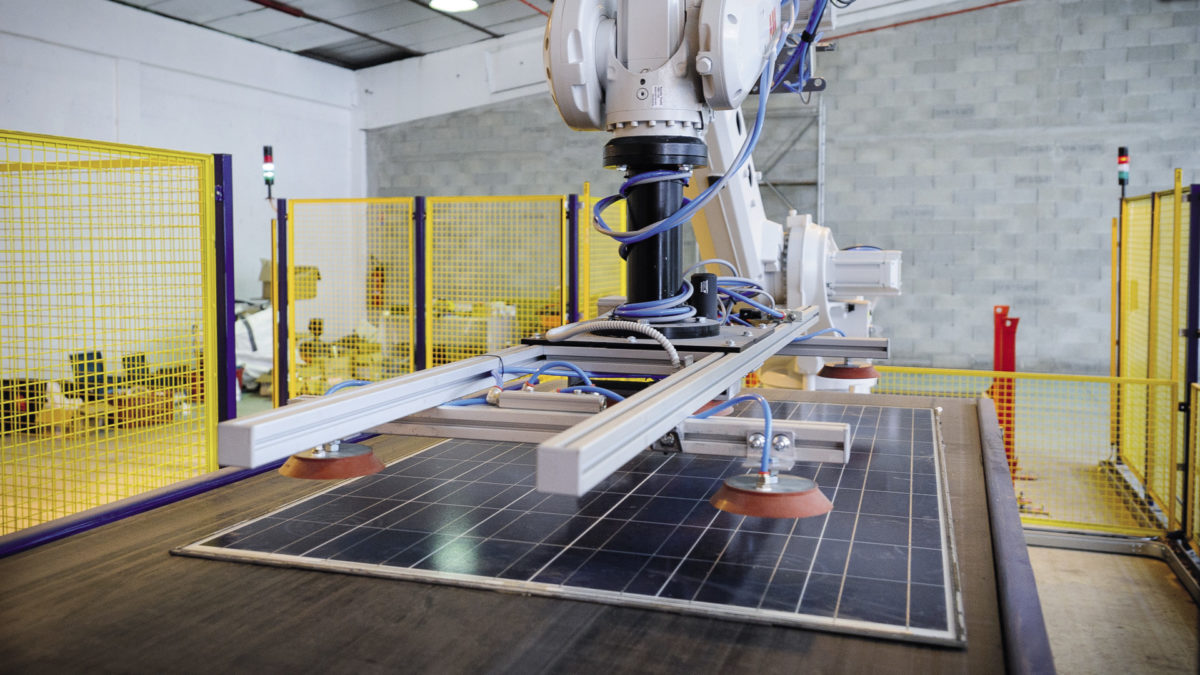The International Energy Agency’s Photovoltaic Power Systems Programme (IEA PVPS) has published a new report offering guidelines for module manufacturers to consider recyclability of their products from the beginning, noting that with projected growth in PV over the coming decades, material shortages could become an issue, and preventing end-of-life modules from ending up in landfill should be an industry priority.
Alongside general guidelines such as avoiding hazardous or hard to recycle materials, such as one-way adhesives, and developing a standardized labelling system allowing recyclers to identify materials, the report makes several points specific to PV module design. The authors advise module designers to give particular consideration to backsheet compositions, choice of metals, minimizing use of encapsulants or using reversible encapsulant materials, choosing a frame sealant that would allow for disassembly, and including some durable way for recyclers to identify the materials and construction of the module.
“If adopted today, application of these DfR guidelines could help to mitigate tomorrow’s resource scarcity, lower the barriers and cost for PV recycling, and enable a circular economy during the energy transition,” the author’s state.
Durability vs. recyclability
The report goes on to address the balance between designing products that last for a long time, and also considering ease of disassembly at end-of-life. “…all products reach end of life at some point, even durable ones, and it is better environmentally to recover and reuse those materials than lock them away in landfills,” they explain.
This will remain a challenge for the industry for years to come, and IEA PVPS notes that policy encouraging manufacturers to consider both sides of the equation, as well as availability of assessment frameworks and other resources to help guide choice of materials will be essential here.
It also notes that design for recycling can also include the possibility for recyclers to separate entire components from the module for reuse or remanufacturing, eliminating the need to go all the way back to a raw material – and the picture is bigger than recycling alone. “Economics, product performance, and environmental impacts must be considered; recycling at EOL may not always be the best solution for the existing manufacturing and recycling ecosystem,” the report states.
“Ultimately, it is desirable to achieve system-wide goals, such as ensuring material supply,
maximizing material value, or minimizing life cycle impacts.”
Recycling technology
Since technologies for module recycling are still in the early stages, the report notes that manufacturers will need assurances that materials can be handled recyclers twenty or more years down the line. And one way for manufacturers to reduce this risk, say IEA PVPS, is for them to become involved directly in planning and development of future recycling capabilities.
This content is protected by copyright and may not be reused. If you want to cooperate with us and would like to reuse some of our content, please contact: editors@pv-magazine.com.




By submitting this form you agree to pv magazine using your data for the purposes of publishing your comment.
Your personal data will only be disclosed or otherwise transmitted to third parties for the purposes of spam filtering or if this is necessary for technical maintenance of the website. Any other transfer to third parties will not take place unless this is justified on the basis of applicable data protection regulations or if pv magazine is legally obliged to do so.
You may revoke this consent at any time with effect for the future, in which case your personal data will be deleted immediately. Otherwise, your data will be deleted if pv magazine has processed your request or the purpose of data storage is fulfilled.
Further information on data privacy can be found in our Data Protection Policy.